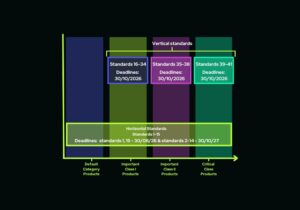Cyber Target Operating Model TOM
In today’s fast-paced business environment, organizations constantly strive for efficiency, agility, and sustainable growth. Achieving these goals often involves reevaluating and optimizing their operational structures. It is good practice for any organisation to have a detailed operating model. A Cyber Target Operating Model or TOM is specific to the Cyber function and in this article we will exlore what it is, how it is works and why it is a beneficial and valuable exercise for CISOs.
A Target Operating Model (TOM) is a blueprint that outlines how an organization intends to operate in the future to achieve its strategic objectives. It serves as a roadmap for aligning people, processes, technology, and resources with the organization’s strategic vision. The primary goal of a TOM is to optimize operations, increase efficiency, reduce costs, and add value for the stakeholders.
Building a cyber specific target operating model can help you shape and build the right processes, technology and team to meet your organisations cyber security objectives now and for the future. All too often operating models evolve in an adhoc manner with little forward planning, design or analysis of what is needed to meet current and future objectives. It has been demonstrated that not leaving this up to chance can increase productivity by 20%.
Essential Components of a Cyber Target Operating Model
Cyber Strategy Alignment: The CTOM begins with a clear alignment of operational goals with the cyber security strategic objectives. This ensures that the model supports the long-term vision.
Processes and Workflows: Identifying and defining core processes and workflows is crucial. Streamlining and automating processes can lead to increased efficiency and reduced operational costs.
Team Structure: The cyber team structure is a critical element of the CTOM. It defines roles, responsibilities, reporting lines, and how teams collaborate within the organization and with outsource partners.
Tools and Technology: Evaluating and selecting the right technology and tools to support cyber security operations now and in the future is vital. This includes software, hardware, and infrastructure investments.
People and Culture: Fostering the right team culture and ensuring that FTEs and contractors have the necessary skills, utilisation and capabilities are fundamental to the CTOM’s success.
Metrics: Effective key performance indicators (KPIs) are necessary to monitor and measure the progress and success of the CTOM.
Implementing a Cyber Target Operating Model offers several advantages:
Increased Efficiency: Streamlined processes and optimized resources lead to increased operational efficiency.
Cost Reduction: Identifying and eliminating inefficiencies can significantly reduce operational costs.
Enhanced Stakeholder Value: A well-designed CTOM can improve value to the organisation by ensuring smoother interactions and a more efficient cyber security capability.
Agility: CTOMs can enhance the response of cyber security teams to changing threat landscape.
Strategic Alignment: Ensures that operational activities align with the strategic goals set by the CISO.

Conclusion
Your CTOM should help evolve and mature your cyber security capability to future proof your organisation for tomorrow’s threat landscape. By aligning strategy, processes, technology, and people, a well-crafted CTOM can lead to increased efficiency, reduced costs, and improved levels of risk exposure. However, it’s essential to recognize that a CTOM is not a one-time effort; it requires continuous monitoring and adaptation to remain effective in a dynamic environment. CISOs that invest in the time in analysing their requirements, developing, and implementing a Cyber Target Operating Model position themselves for in a strong position to implement their strategy and achieve success for their respective organisations.





 Download File
Download File